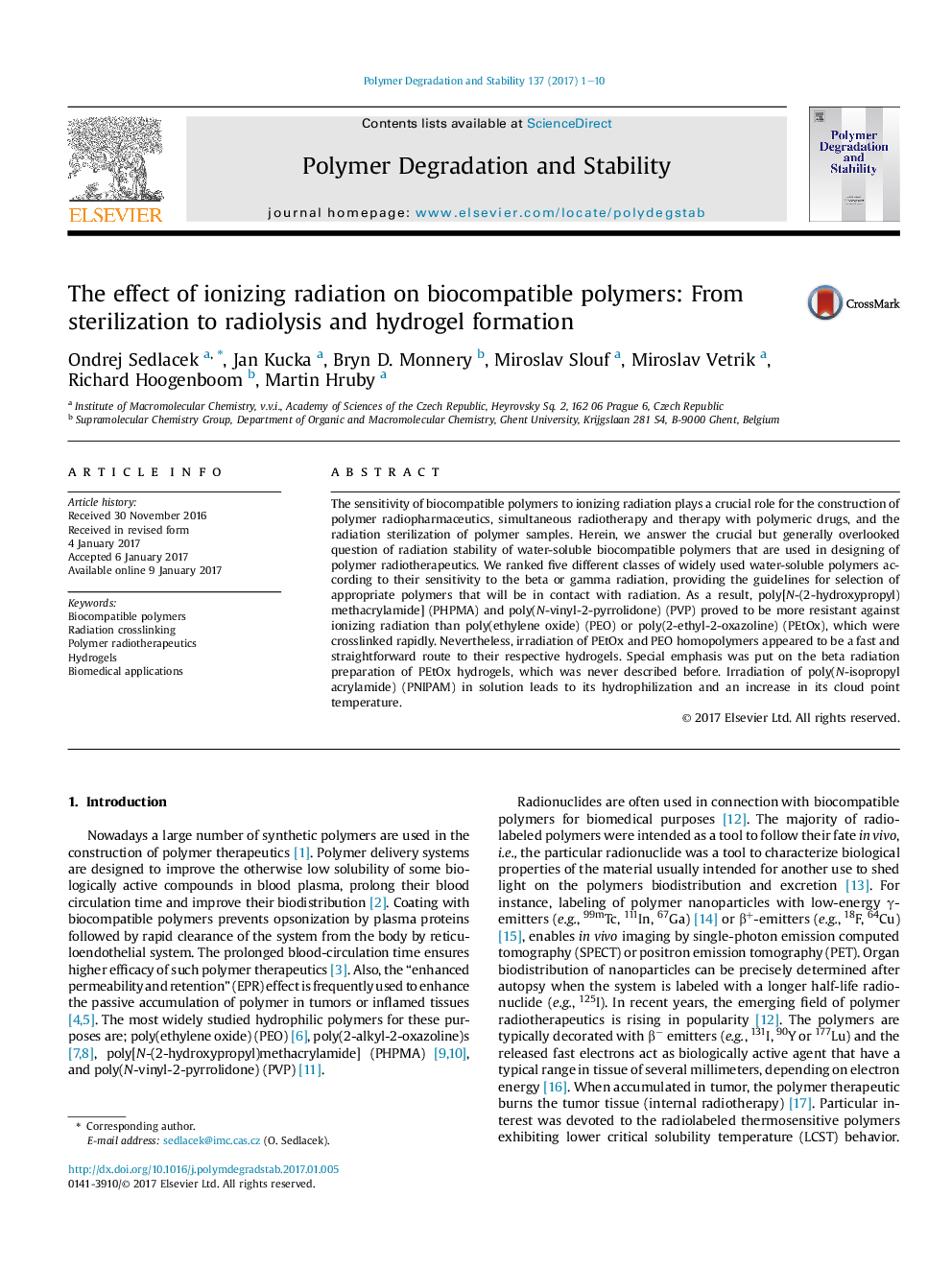| Article ID | Journal | Published Year | Pages | File Type |
|---|---|---|---|---|
| 5200800 | Polymer Degradation and Stability | 2017 | 10 Pages |
The sensitivity of biocompatible polymers to ionizing radiation plays a crucial role for the construction of polymer radiopharmaceutics, simultaneous radiotherapy and therapy with polymeric drugs, and the radiation sterilization of polymer samples. Herein, we answer the crucial but generally overlooked question of radiation stability of water-soluble biocompatible polymers that are used in designing of polymer radiotherapeutics. We ranked five different classes of widely used water-soluble polymers according to their sensitivity to the beta or gamma radiation, providing the guidelines for selection of appropriate polymers that will be in contact with radiation. As a result, poly[N-(2-hydroxypropyl)methacrylamide] (PHPMA) and poly(N-vinyl-2-pyrrolidone) (PVP) proved to be more resistant against ionizing radiation than poly(ethylene oxide) (PEO) or poly(2-ethyl-2-oxazoline) (PEtOx), which were crosslinked rapidly. Nevertheless, irradiation of PEtOx and PEO homopolymers appeared to be a fast and straightforward route to their respective hydrogels. Special emphasis was put on the beta radiation preparation of PEtOx hydrogels, which was never described before. Irradiation of poly(N-isopropyl acrylamide) (PNIPAM) in solution leads to its hydrophilization and an increase in its cloud point temperature.
